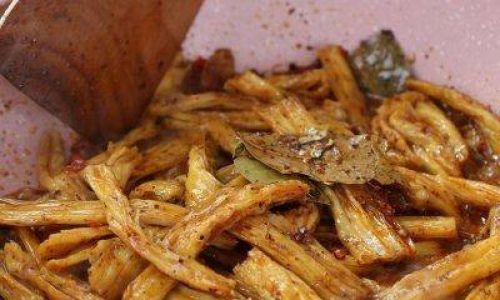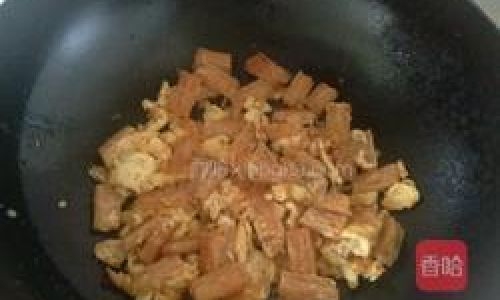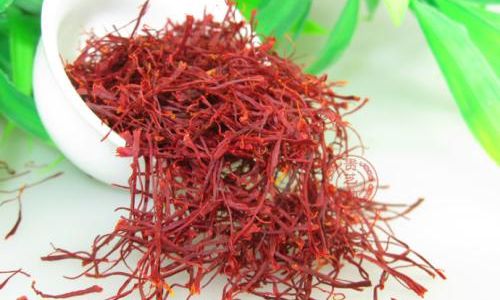Introduction
Spicy stir-fried latiao, a beloved Chinese street food snack, has captured the hearts and taste buds of millions worldwide with its fiery kick, chewy texture, and addictive umami flavor. Originating from China’s bustling night markets, this snack—often dubbed “spicy gluten strips” in English—has evolved from a regional specialty into a global sensation. While store-bought versions are readily available, mastering the art of homemade latiao allows for customization of spice levels, texture, and quality, ensuring a fresher, more personalized experience. This comprehensive guide will walk you through the history, ingredients, and meticulous process of creating authentic spicy stir-fried latiao from scratch. Whether you’re a seasoned home cook or a curious food enthusiast, this journey promises to equip you with the skills to recreate this iconic snack in your own kitchen.
The Origins and Cultural Significance of Latiao
Latiao’s story begins in China’s Hunan province, a region renowned for its bold, chili-forward cuisine. Legend has it that the snack was invented during the 1990s when street vendors began frying wheat gluten—a byproduct of flour production—into chewy strips, then tossing them in a blend of spices, oil, and sugar. The result was a snack that balanced heat, sweetness, and saltiness, quickly becoming a favorite among students, office workers, and late-night revelers. Today, latiao is not just a snack but a cultural icon, with flavors ranging from classic “numbing-spicy” (mala) to innovative takes like garlic Parmesan or honey BBQ. However, the traditional spicy stir-fried version remains a timeless favorite, embodying the spirit of Chinese street food: bold, unapologetic, and utterly satisfying.
Ingredients: The Foundation of Flavor
Crafting authentic latiao requires a careful selection of ingredients, each playing a pivotal role in achieving the signature balance of heat, sweetness, and umami. Here’s a breakdown of the essential components:
- Wheat Gluten (Seitan): The star ingredient, wheat gluten provides the chewy, meat-like texture that defines latiao. Look for vital wheat gluten flour or pre-made seitan strips in Asian grocery stores or health food sections.
- Dried Chili Flakes and Sichuan Peppercorns: For the signature “mala” (numbing-spicy) flavor, combine coarse chili flakes with whole Sichuan peppercorns, which impart a tingling sensation.
- Aromatics: Fresh garlic, ginger, and scallions form the flavor base. Minced garlic and ginger add pungency, while scallions contribute a mild oniony sweetness.
- Sauces and Seasonings: Soy sauce (or tamari for gluten-free), dark soy sauce for color, Chinese black vinegar, sugar, and sesame oil create the complex sauce coating.
- Oil: Use a neutral oil like vegetable or canola oil for frying, as it withstands high heat without imparting flavor.
- Optional Add-Ins: For texture and visual appeal, consider adding toasted sesame seeds, crushed peanuts, or dried shrimp (for an umami boost).
Equipment: Tools of the Trade
To achieve latiao’s signature char and chew, you’ll need the following equipment:
- Wok or Large Skillet: A wok’s high sides and even heat distribution are ideal for stir-frying, but a large cast-iron or stainless-steel skillet works as a substitute.
- Wooden Spatula or Tongs: Essential for tossing and flipping the gluten strips without damaging the wok’s surface.
- Sharp Knife and Cutting Board: For slicing aromatics and gluten.
- Mixing Bowls: One for marinating the gluten and another for combining the sauce ingredients.
- Slotted Spoon or Spider Strainer: To drain excess oil from the fried gluten strips.
Step-by-Step Preparation: From Gluten to Gourmet

Preparing the Wheat Gluten
If using vital wheat gluten flour, prepare the seitan by mixing 1 cup of flour with ¾ cup of water. Knead until a dough forms, then rinse under cold water until the water runs clear (this removes excess starch). Simmer the dough in broth for 30–40 minutes, then let it cool and slice into thin, bite-sized strips. For pre-made seitan, simply slice it into strips or purchase vacuum-packed gluten strips from Asian markets.
Marinating the Gluten (Optional but Recommended)
Marinating the gluten strips enhances flavor penetration. In a bowl, combine the strips with 1 tbsp soy sauce, 1 tsp dark soy sauce, 1 tsp sugar, and 1 tsp Chinese cooking wine (or sherry). Let marinate for 15–30 minutes.
Frying the Gluten Strips
Heat 2 cups of oil in the wok over medium-high heat until it reaches 350°F (175°C). Fry the gluten strips in batches for 2–3 minutes, or until they puff slightly and turn golden brown. Use a slotted spoon to transfer them to a paper towel-lined plate to drain excess oil. Pro Tip: Frying the gluten twice—once at a lower heat to cook through, then a second time at higher heat for crispiness—yields the best texture.
Crafting the Spice Blend
In a dry pan, toast 2 tbsp Sichuan peppercorns and 1 tbsp whole coriander seeds over low heat until fragrant (1–2 minutes). Grind them coarsely using a mortar and pestle or spice grinder. Combine with 3 tbsp dried chili flakes, 1 tsp five-spice powder, and 1 tsp salt.
Stir-Frying the Aromatics and Sauce
Drain all but 2 tbsp of oil from the wok. Over medium heat, stir-fry 3 tbsp minced garlic, 1 tbsp minced ginger, and 2 tbsp chopped scallions until fragrant (30 seconds). Add the spice blend and stir-fry for 1 minute to toast the spices. Stir in 2 tbsp soy sauce, 1 tbsp dark soy sauce, 1 tbsp black vinegar, 1 tbsp sugar, and 1 tsp sesame oil. Simmer for 1–2 minutes until the sauce thickens slightly.

Combining Gluten and Sauce
Add the fried gluten strips to the wok and toss vigorously to coat them evenly in the sauce. Cook for 2–3 minutes, allowing the gluten to absorb the flavors. For extra heat, sprinkle with 1–2 tsp of chili oil or additional dried chili flakes.
Finishing Touches
Remove from heat and toss with 1 tbsp toasted sesame seeds and 2 tbsp crushed peanuts (optional). Garnish with chopped cilantro or thinly sliced scallions for a pop of color and freshness.
Serving Suggestions and Pairings
Spicy stir-fried latiao is best enjoyed immediately while still warm and chewy. Serve it as:
- A Standalone Snack: Pair with an ice-cold beer or bubble tea to balance the heat.
- A Noodle Topping: Toss with chilled noodles, cucumber ribbons, and shredded carrots for a quick meal.
- A Party Appetizer: Skewer the strips and serve with a dipping sauce of soy sauce, vinegar, and minced garlic.
Troubleshooting and Tips for Perfection
- Soggy Gluten: Ensure the oil is hot enough before frying. Overcrowding the wok can lower the temperature and result in greasy strips.
- Bland Flavor: Increase the spice blend or add a splash of vinegar for acidity. Marinating the gluten longer also helps.
- Too Spicy: Balance the heat with a drizzle of honey or a sprinkle of sugar. Offer yogurt or cucumber slices on the side.
- Texture Issues: For chewier latiao, simmer the gluten strips in broth for an extra 10 minutes before frying. For crispier strips, double-fry them as mentioned earlier.
Variations and Creative Twists

- Vegan Latiao: Use tamari instead of soy sauce and omit dried shrimp. Add nutritional yeast for a cheesy umami kick.
- Sweet and Spicy: Incorporate 1 tbsp of hoisin sauce or gochujang into the spice blend.
- Numbing-Spicy (Mala) Version: Increase the Sichuan peppercorns and add 1 tsp of Sichuan chili bean paste (doubanjiang).
- Gluten-Free Alternative: Substitute wheat gluten with shirataki noodles or king oyster mushroom stems sliced into strips.
The Science Behind the Chew: Understanding Gluten
Wheat gluten’s unique protein structure is key to latiao’s satisfying texture. When kneaded and simmered, gluten proteins align into long strands, creating a dense, chewy matrix. Frying dehydrates the surface while keeping the interior moist, resulting in a contrast that’s both crispy and tender. This texture, combined with the sauce’s caramelized sugars and spices, creates a sensory experience that keeps snackers reaching for more.
Cultural Etiquette and Enjoyment
In China, latiao is often shared among friends as a symbol of camaraderie. The act of tearing the strips with chopsticks or fingers and withstanding the heat is part of the fun. However, be mindful of the spice level—it’s customary to offer a beverage or a mild side dish to balance the flames.
Conclusion: A Snack That Transcends Borders
Spicy stir-fried latiao is more than a snack—it’s a testament to the power of culinary ingenuity. By mastering its preparation, you’re not just cooking; you’re engaging with a tradition that has delighted generations. Whether you’re hosting a party, craving a midnight treat, or seeking a creative way to use pantry staples, latiao delivers. So fire up your wok, embrace the heat, and embark on a flavor journey that bridges continents and cultures. Your taste buds—and your guests—will thank you.
Final Thoughts
The beauty of homemade latiao lies in its adaptability. Experiment with spice ratios, textures, and pairings to make it uniquely yours. Remember, the best latiao is the one that makes your palate tingle and your heart sing. Happy cooking!






0 comments